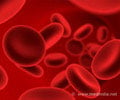The first major trial of a catheter-based treatment for deep vein thrombosis is due to be led by an Indian-origin researcher. The study will evaluate the use of clot-dissolving drugs in combination with clot removal devices to prevent post-thrombotic syndrome in patients with DVT.
Dr. Suresh Vedantham, an interventional radiologist, hopes that the results of the National Institutes of Health's National Heart, Lung and Blood Institute (NHLBI)-funded ATTRACT trial will revolutionise the way DVT is treated in the country."The ATTRACT trial could fundamentally shift the 50-year-old DVT treatment paradigm to one that includes interventional clot removal as an essential element of standard DVT care," said Vedantham, who is an associate professor at the Washington University School of Medicine's Mallinckrodt Institute of Radiology in St. Louis.
"By funding this study, the NHLBI has clearly recognized the strong potential of interventional radiology clot removal treatments for DVT to improve public health," Vedantham added.
ATTRACT is a multicenter, randomized trial "that will definitively determine if the newest clot-busting treatment (pharmacomechanical catheter-directed thrombolysis or PCDT) prevents post-thrombotic syndrome in patients with DVT," the expert said.
He has revealed that PCDT combines the use of a clot-dissolving drug with a catheter-mounted miniature clot removal device, allowing an interventional radiologist to break up the clot and remove it from the vein, restoring blood flow.
"PTS is a serious complication of DVT that is under recognized and potentially preventable if we are able to dissolve the clots early, before permanent damage to the vein occurs. Established PTS is a lifelong, irreversible condition for which there are no consistently effective treatments. Its prevention is extremely important; however, physicians have historically neglected the prevention of PTS," said Vedantham.
Advertisement
Dr. Michael Darcy, chair of the board of directors for SIR Foundation, a scientific foundation dedicated to fostering research and education in interventional radiology, said: "This research is critical. The Society of Interventional Radiology Foundation initiated a DVT research consensus panel four years ago, bringing together clinicians and scientists from all disciplines and from all settings-academia, private practice, government and industry-and determining the need for the ATTRACT trial."
Advertisement
Early treatment with blood thinners can prevent a life-threatening pulmonary embolism, but blood thinners do not dissolve the existing clot, which remains in the leg.
Though clots in many patients slowly dissolve over time, often the vein wall and vein valves become irreversibly damaged in the process.
"PTS develops as a direct result of having the blood clot stay in the vein. The blood clot continues to block the vein and permanently damages its one-way valves, resulting in the pooling of blood in the leg, chronic leg pain, swelling and fatigue and sometimes skin ulcers. It's logical that immediate clot removal will prevent PTS," said Vedantham.
The ATTRACT trial, which begins later this year, will assess the presence and severity of PTS, quality of life, relief of pain and swelling, safety and costs.
At least 28 U.S. clinical centres will enrol 692 patients and monitor their health for two years, said Vedantham.
Source-ANI
RAS/SK















